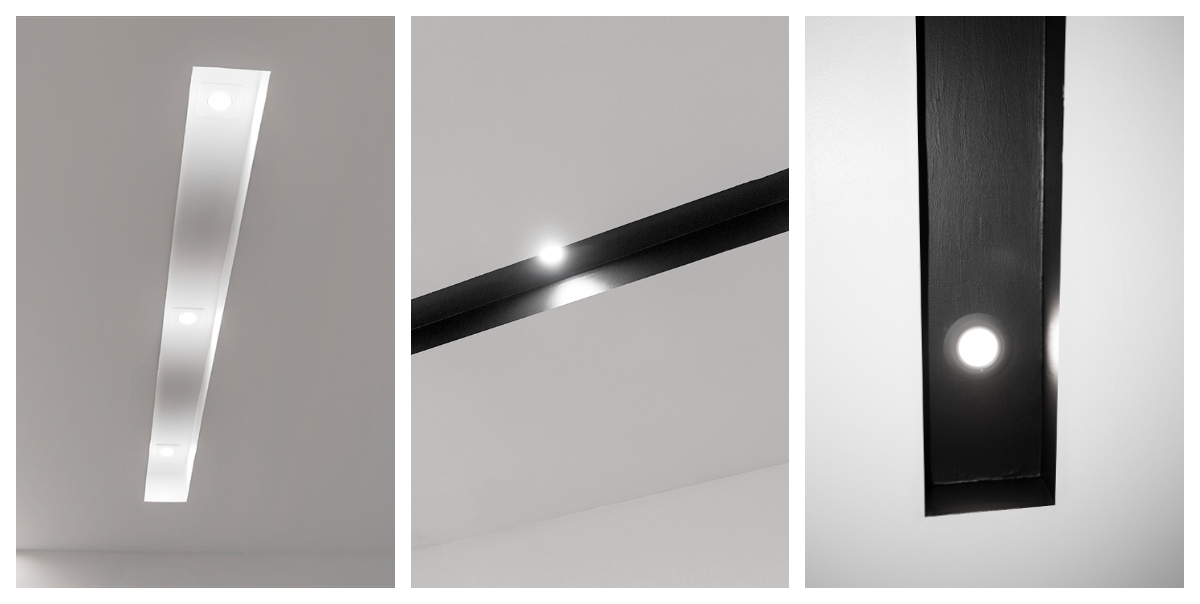For LedStore, glare-free spotlight gutters were renovated on the ceiling, with 3 pcs of 9W spots installed in each. Recessed gutters bring a new look to the lighting of the space compared to the previous LED panel lighting. One gutter was painted white on the inside and the other black. A similar renovation can be done quite easily if the ceiling is plasterboard and has enough cavity space. In a new building, the situation is naturally easier when spotlight gutters can be brought to the design table early enough.
The renovation required carpentry and electrical skills. Less than €100 was spent on materials and the price of the spot is €444 (incl. VAT).
Planning a lighting renovation
They wanted to give a new look to the studio they were renovating with lighting. Previously there were two 300×1200 LED panels in the space, and they illuminated the space comfortably evenly. The two panels provide a total of 6,000 lumens of illuminance, calculated at 500 lumens per square metre in a 12 square metre room, which is enough to work with.
However, in addition to the panels, LED strip lights were installed on top of the desks at three workstations. The amount of light therefore increased, making it possible to create a new look for general lighting. The space was fitted with LED panels to replace the recessed spotlight gutters. Three spots per luminaire provide a calculated 300 lux per square metre, which is sufficient when the workstations are equipped with sufficiently efficient LED strip and aluminium profile LED track lighting.
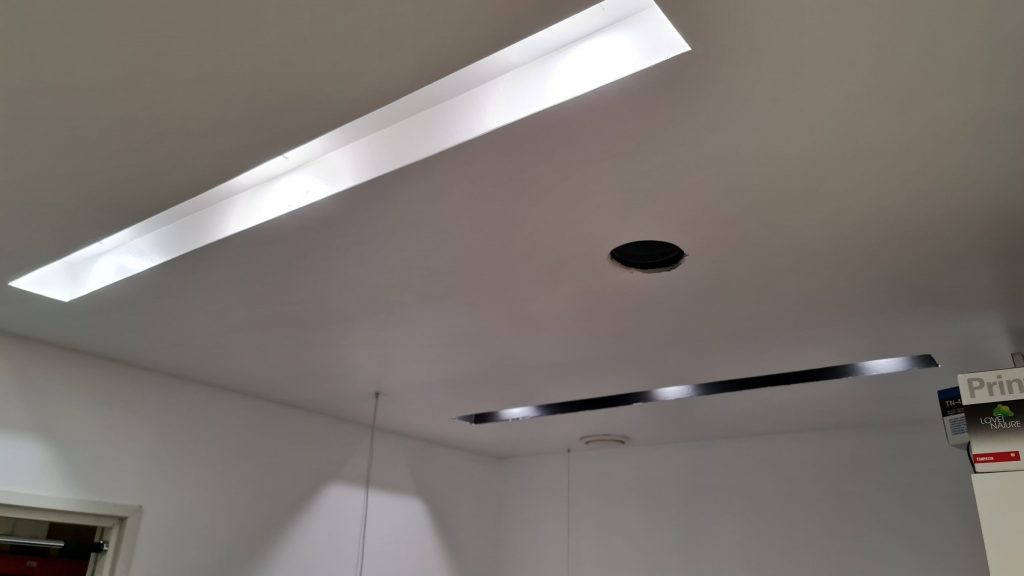
Renovation accessories – selected spots
It was decided to use three 9W spots with a luminous intensity of 600 lumens per spot. The light from these 9W spots opens up at a good general angle of 45 degrees. There are two options for the shape of the body, square or round. A square body was chosen, with a circular aperture, as in all LedStore 9W and 15W spotlights, i.e. downlights.
Spots have a very high colour rendering index (CRI), which makes the light they emit natural and sensory-friendly. Thanks to the high quality transformers and LED circuits, there is no noticeable disturbance such as flicker, which can cause eye strain during the working day. The spots are also dimmable, and the white light colour temperature can be selected from three options at the installation stage: warm 2900K, neutral 4000K and cold 5500K. The luminaires are supplied with a luminaire-specific power supply as standard, but if floating colour temperature control is desired, they are converted to a group transformer according to the control mode.
For the black spotlight trough, black round-bodied 9W directional spots were chosen, and for the white trough, white Kantti 9W directional spots with a four-armed body were chosen.
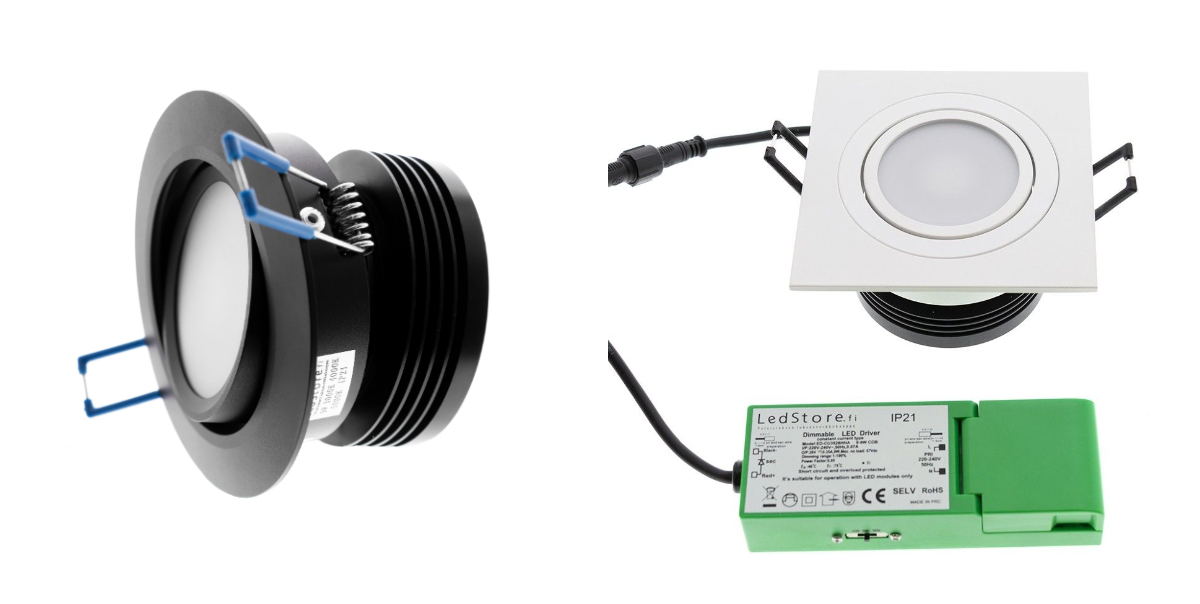
Phases of the renovation – building a light gutter
The construction of the spotlight gutter started with the removal of the panel luminaires from the ceiling. A 2 metre long chute was cut from the panel’s embedment hole with a plaster saw to a width of 15 cm. The appropriate opening width was achieved by adding additional 250 mm high beams to the mezzanine floor. A typical joist spacing is 400 mm, and the desired width of the gutter was 150 mm.The 55×55 mm battens were fixed to the joists at a height of 133 mm to achieve the desired gutter depth of 120 mm with 13 mm plasterboard thickness.

In simple terms, the steps for the roof gutter included sawing a hole of the right size and adding beams and battens. The interior pieces were cut from plasterboard and holes were made in the bottom piece for the spots. The ceiling structure had a 250mm deep space, so it was easy to make the gutter deep enough, and there was still plenty of room above the spots. A proven depth of 120mm was chosen to prevent the luminaires from being visible from the side.
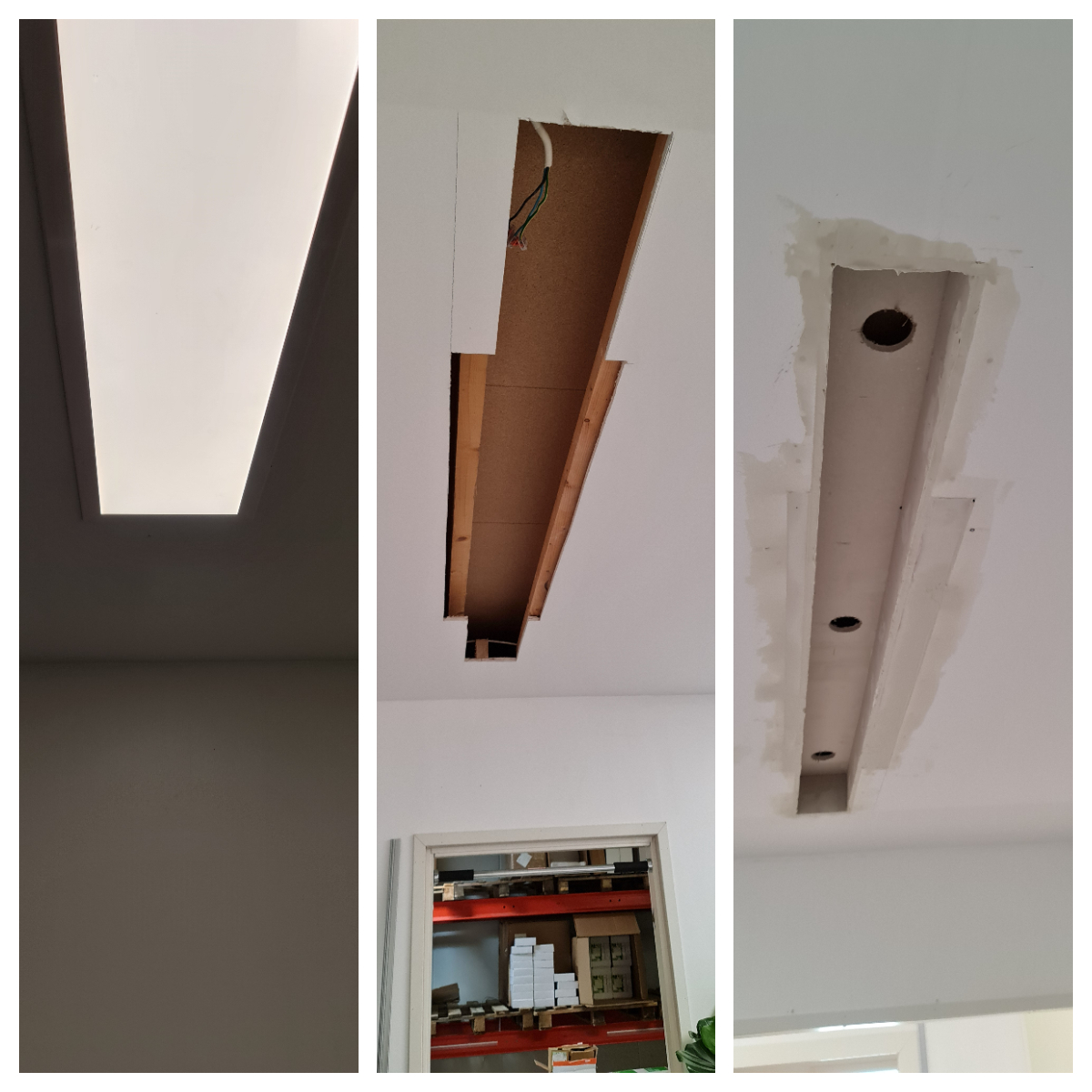
Phases of the renovation – installing lighting and lighting control
The lights were installed in 80 mm mounting holes with chainable power supplies. The spots are held in place well by springs. The colour temperature of the power supply side was chosen to be neutral white at 4000 Kelvin. When the colour temperature is selected, the power must be off. The light switch was already on the wall, so we decided to use it for the spots.
There are also other ways to control spots. The lights can be dimmed by installing a wall dimmer, which is designed to dim the LEDs. LedStore is testing several different models, and we have published the test results on our website under About > Dimming
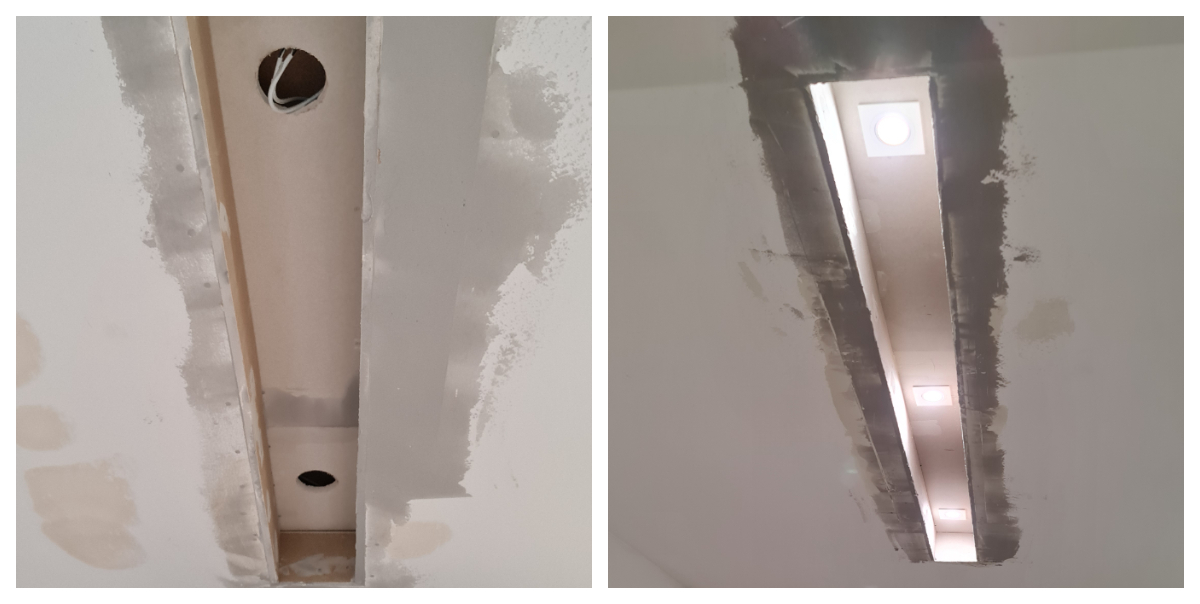
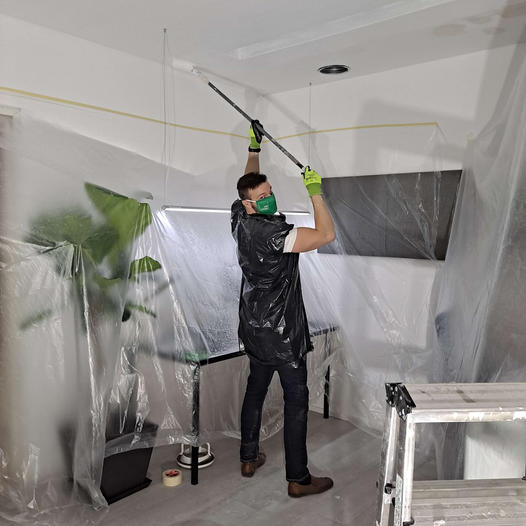
The spots also feature a colour temperature control, which can be adjusted from warm to cold, i.e. from around 2800 to 5500K. For this purpose, the spots’ own power supplies are replaced by a single transformer, according to the total combined power of the spots, which can be connected to a 24V wired dimmer.
There are two options for wireless control, VaLO RF and VaLO RF Zigbee. In these options, the light dimmer can be freely positioned in the desired location on the wall, or a remote control can be used. There can be more than one controller per lighting group. The Zigbee family of controllers has a different look and feel. The transformers are selected from the VaLO RF or VaLO RF Zigbee product groups according to the total combined power of the spots, and the transformer has a built-in receiver that sends a signal to the controllers. Zigbee can be connected to smart home control with almost all hubs using the Zigbee protocol, such as Philips Hue and Samsung Smart Things.
How does the lighting change in a black and white light trough?
We tested and measured the luminous intensities in both the black-painted trough and the white-painted trough. It was known that a black surface reduces light reflections, and this proved to be true and accurate when measured with a light meter. Measured directly under the gutters, the amount of light was the same in both gutters. The sides of the white trough had about 20% more light than the sides around the black trough.
This is explained by the fact that light is less likely to reflect off the walls of the trough and around it when the trough walls are black. Under the black trough and on the sides, there are also stronger shadows of furniture and people, because the reflection of the light on the surroundings is less. Light is more clearly directed from top to bottom.
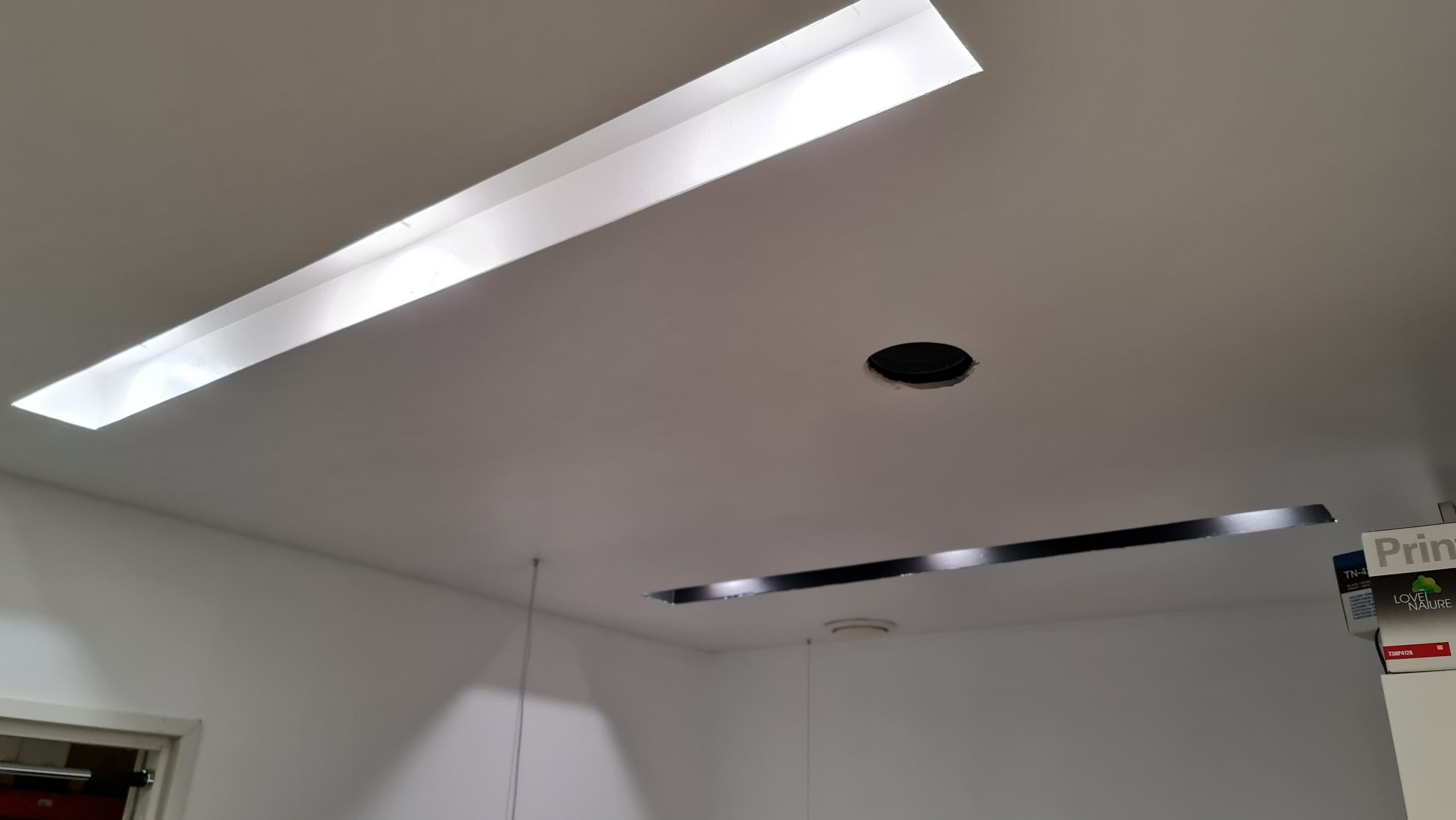
You can ask more questions about the renovation and come and meet us in the store!
The light gutters can be seen in the store of Lamppukauppa Led Store in Koivuhaa, Vantaa, at Mesikukantie 16, 01300 Vantaa. On display in the store with the full range installed. In the same premises also LedPaja and lighting design and consultancy. Welcome!

